Foundation for Rural & Regional Renewal (FRRR)
Funding helps local preparedness projects get off the ground
Local groups in Korumburra, Myrtleford and Whittlesea township and surrounds, are taking an active approach to preparing their regions for future disaster, thanks to a partnership with FRRR’s Disaster Resilient: Future Ready (DR:FR) Victorian program.
As part of the place-based DR:FR program, the three regional communities are sharing a total of $120,839 in grants. These funds are already being put to use, with communities leading local initiatives designed to improve wellbeing, increase preparedness and strengthen resilience so that each place has greater capacity to endure, adapt and evolve positively when faced with the impacts of climate, disasters and other disruptions.
Nina O’Brien, FRRR’s Disaster Resilience and Recovery Lead, said that FRRR is the DR:FR initiative is an active partnership between FRRR and the communities.
The premise of the DR:FR program is to partner with local groups and community members, and provide them with the tools and resources to identify what their community needs to prepare for the impacts of climate change, natural disasters and broader disruptions.
“The priority projects have been under development since March, so it’s a major milestone to see the local groups getting these important ideas off the ground. We are inspired by the passion and persistence shown by each group and their eagerness to make a difference when the next emergency arrives. “We look forward to continuing to partner with these communities to better prepare their regions to withstand the impacts of future disasters,” Ms O’Brien said.
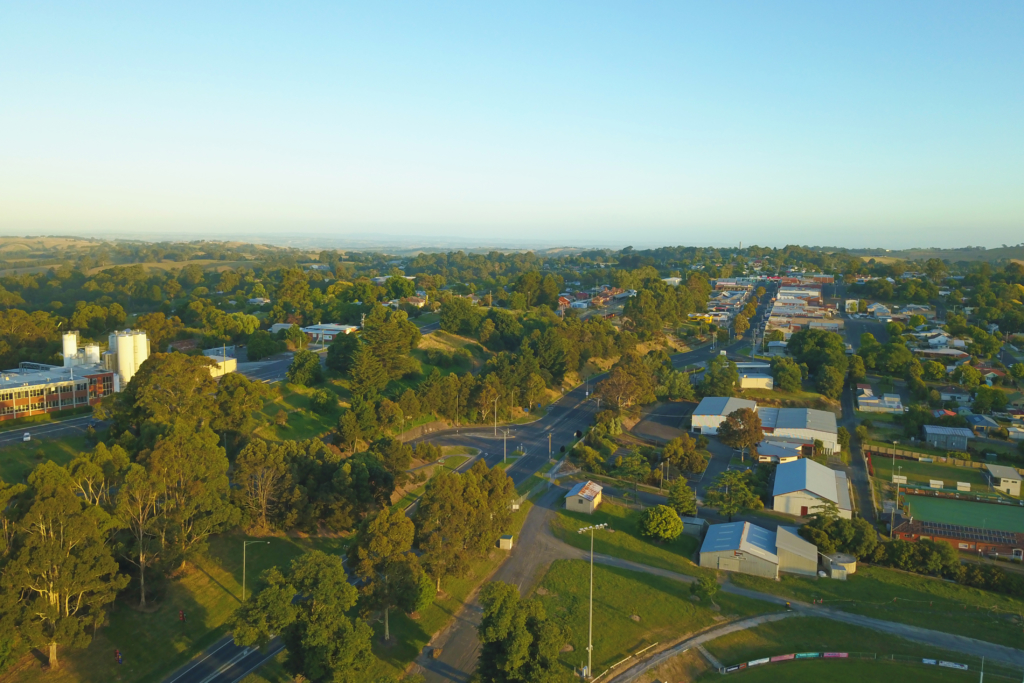 Korumburra, VIC (Image: Tamara Bauer)
Korumburra, VIC (Image: Tamara Bauer)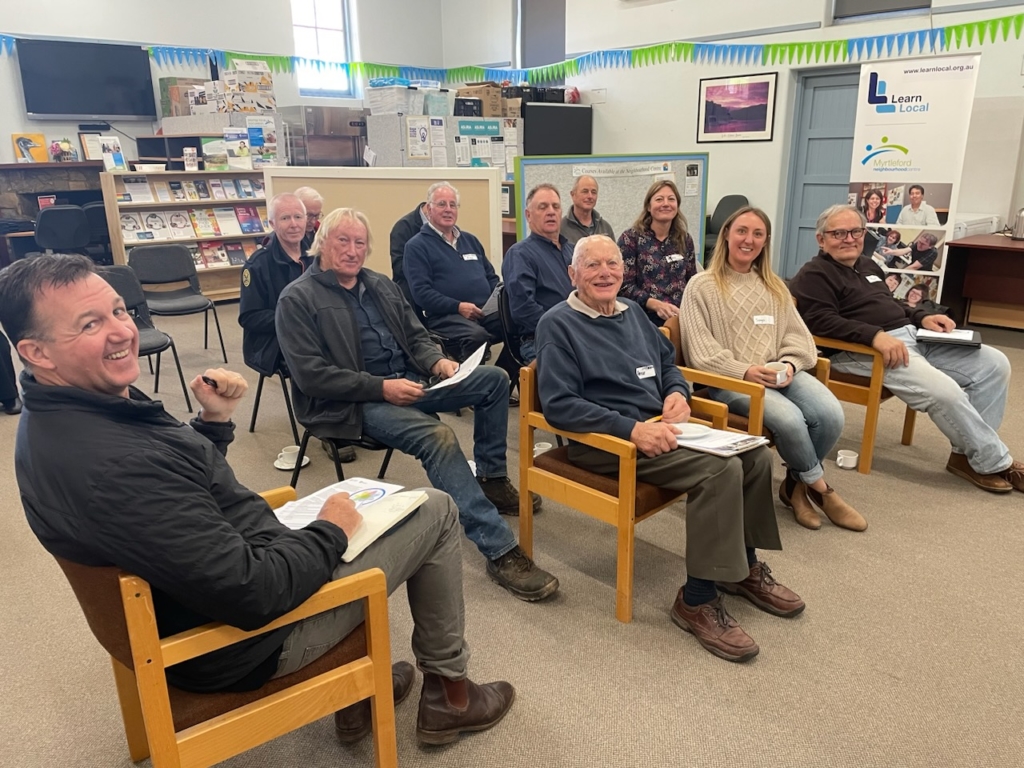 Myrtleford, VIC
Myrtleford, VIC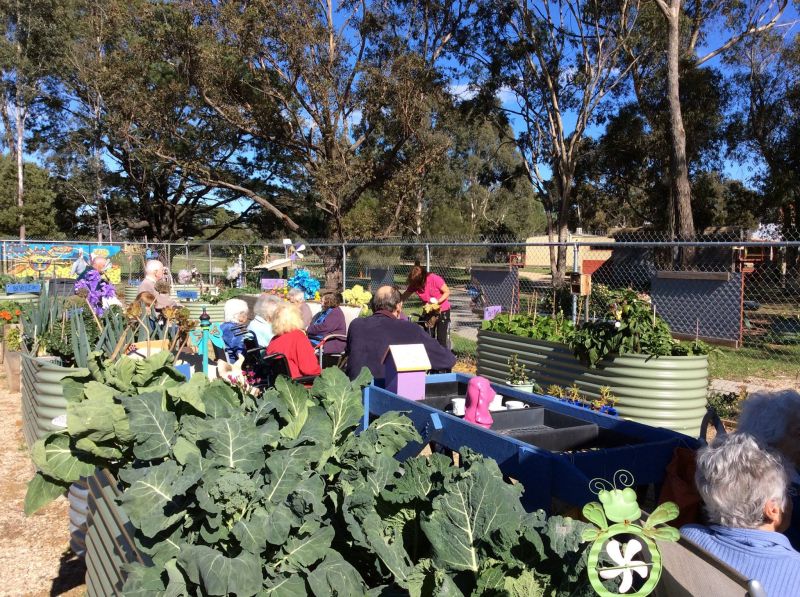 Whittlesea Township & Surrounds, VIC
Whittlesea Township & Surrounds, VIC
Community updates
Korumburra
Korumburra is setting up a Helping Hub, to be run from the local Community House.
The Helping Hub will match community volunteers with those in need of assistance via a website, social media and six-monthly volunteer expos.
The Hub will build community networks and provide connection to residents who need support, improving resilience generally and in emergencies such as storms or heatwaves.
Myrtleford
Mytrleford is fortunate to have a range of community groups and resources that can be mobilised to support the community during a disaster.
FRRR funding has been used to engage a person in a Community Connector Role for the Myrtleford neighbourhood to understand each group’s facilities and resources.
They will continue to work with the groups to plan how they can collectively support residents in the first 72 hours of an emergency event such as flooding or bushfire, and develop a Contacts Directory and Community Assets Map to make communication and co-ordination of resources easier in an emergency.
Whittlesea Township and Surrounds
Whittlesea Township and Surrounds’ Community Resilience Committee (CRC) is using their grant to employ a project officer to support a range of initiatives.
The CRC is keen to ensure that grassroots community action in future events is recognised in the formal Municipal Emergency Management Plan (MEMP) and, therefore, by the formal disaster response agencies. They have received support from the MEMP Committee and are currently rewriting a previous Community Emergency Management Plan, to be endorsed later in 2023.
A key project for this group is to set up a Community Emergency Response Network (CERN) of local residents and community organisations. For future large fires and storms, the CERN would be recognised as part of the formal emergency response and would coordinate the local community-level relief efforts.
The DR:FR initiative is collaboratively supported by many generous donors, who are acknowledged on the FRRR website.
For more information about this program, visit https://frrr.org.au/drfr-victoria/.
FRRR Disaster Resilient: Future Ready Burnett Inland (Queensland)
The Foundation for Rural & Regional Renewal (FRRR) has recently commenced the implementation of its Disaster Resilient: Future Ready (DR:FR) initiative in communities and across the Burnett Inland in Queensland. FRRR is delivering this program through local partner Red Earth Community Foundation. The program is made possible through the financial support of the National Emergency Management Agency (NEMA) Preparing Australian Communities – Local Stream, and Minderoo Foundation.
FRRR is seeking proposals from experienced social impact evaluation providers to work with us to:
- Design a Monitoring Evaluation Learning (MEL) approach for the program; and
- Undertake a comprehensive evaluation to understand the outcomes from this investment and the contribution the program has made to disaster resilience in individual communities and across the region.
Supporting Documents
For full details of the evaluation scope and submission requirements please see below:
Request for Proposal – Disaster Resilient Future Ready Burnett Inland Evaluation (PDF)
All submissions must include a completed Budget Template (.docx).
Selection Criteria
- Demonstrated experience in social impact evaluation (as distinct from social research).
- Demonstrated understanding of the requirements, objectives, and motivation of the evaluation.
- Demonstrated knowledge of the program context, policy, purpose, and key stakeholders.
- Proposed evaluation methodology that meets the requirement and suitability of the program and community context.
- Evaluation outputs. Proposals that include a range of outputs including a combination of written reports, case studies, short videos, most significant change interviews, and infographics will be highly regarded.
- Demonstrated knowledge and experience working collaboratively with rural, regional, and remote communities.
- Alignment with FRRR values and aspirations.
- Evidence that relevant insurances, licences, policies, and procedures are in place and compliant with State or Commonwealth laws. Demonstrated health and safety measures including Working with Vulnerable Persons, Working with Children, Occupational Health, and Safety Policies as well as relevant insurances such as Public Liability and Professional Indemnity.
- Willingness to build capability within both FRRR and Red Earth team in the delivery of the project regarding evaluation methodology.
- Overall value for money.
Suitably qualified and experienced individuals or organisations must submit a proposal that includes:
Proposals should be no greater than 30 pages (including attachments).
Key Details
Closing date: Friday, 8 September 2023 at 5:00pm AEST.
Proposals must be lodged via c.larcher@frrr.org.au.
For enquiries or further information, please contact Caroline Larcher, Disaster Resilient: Future Ready Program Manager on 0492 370 586 or c.larcher@frrr.org.au.
By Caroline Larcher, Disaster Resilient: Future Ready Program Manager
I‘m now three months into the role of Disaster Resilient: Future Ready Program Manager with the Foundation for Rural & Regional Renewal – an organisation I’ve long admired. I’ve watched the work they’ve been doing to support recovery and resilience building over recent years. So, when the chance came to join them, I jumped at it.
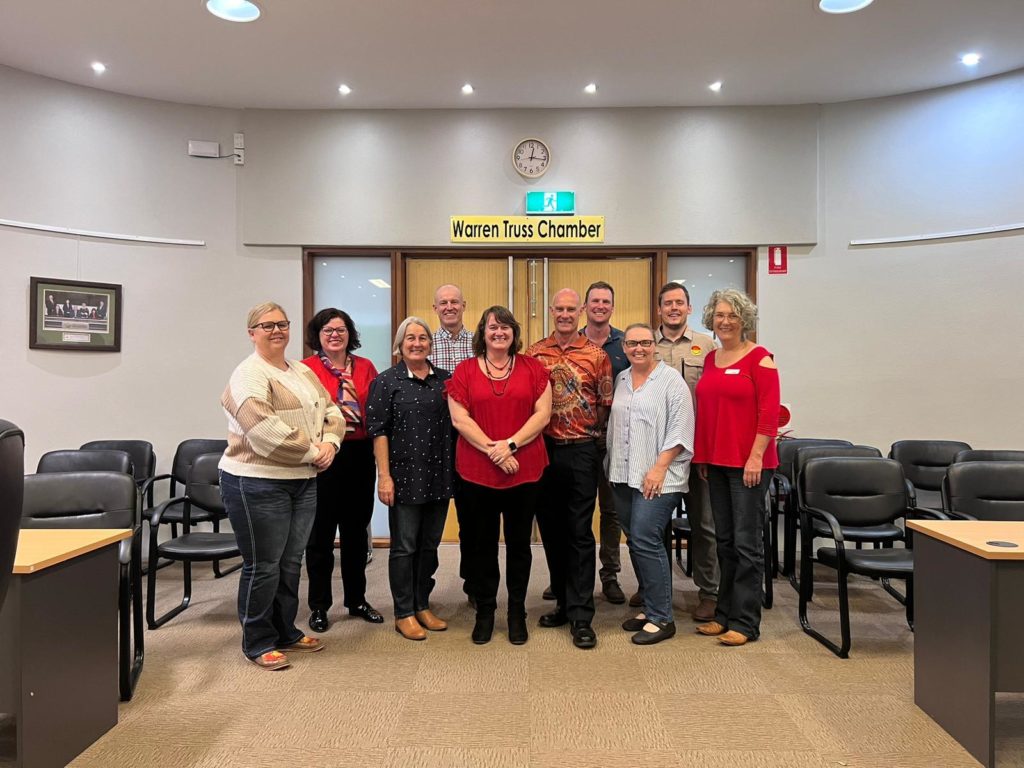
Sadly, natural disasters are impacting rural, regional and remote communities more frequently, with significant consequences, including mental health and wellbeing issues, financial impacts and increased disadvantage.
Through our Disaster Resilient: Future Ready (DR:FR) program, FRRR and our partners have been working with communities to explore, learn and build on their existing strengths and capacities with a specific focus on increasing resilience to natural disasters.
Communities that are engaged, connected, empowered and have high social capital tend to respond and recover better from natural disasters than those with less capacity in these areas. They are also best placed to determine the most effective approaches to building their capacity and capabilities for their particular context.
Discussions at community and regional levels have highlighted that smaller, more isolated rural communities are often not specifically captured in formal emergency response management plans. These communities can be particularly vulnerable to disaster impacts, lacking local emergency services and waiting considerable time for response efforts, including periods of time when they may be physically cut off from outside support.
From early DR:FR projects, FRRR has developed a deeper understanding of effective ways to work with communities to build their capacity and help mitigate these issues. I’m delighted to be continuing this work in Victoria and in Queensland, working alongside local leaders to explore different ways for communities to get engaged and solve these issues.
One thing that’s increasingly apparent and comes up time and again in local conversations is the need for clarity in community-led disaster resilience work, especially around the role of community and where it intersects with the responsibilities of formal emergency response agencies. As the evaluation FRRR commissioned University of Sydney to do on the first DR:FR program showed, the time between disasters is an ideal opportunity for dialogue with communities about disaster information, communication and planning. This increases community ownership, engagement and action. And in the current communities, that’s exactly what we are doing.
Ideally, community-led approaches to resilience building should become more embedded in emergency planning, with communities recognised as equal collaborators in disaster resilience. This can require a change in thinking within the formal planning and response agencies, to adopt more agile and flexible approaches.
We know these things both from formal research but I’ve also seen it first-hand, supporting communities in their preparedness and recovery activities. Community-led disaster resilience thrives on local relationships. Supporting practical links between local community organisations and networks of people enables different stakeholders to mobilise and complement others.
FRRR’s latest DR:FR program is being delivered throughout the Burnett Inland in regional Queensland, in partnership with locally-based Red Earth Community Foundation, and with the support of the Australian Government and Minderoo Foundation. The aim is to build and retain capacity and knowledge in the region. This local focus is further embedded through the establishment of a regional program steering group, comprising local and state government, service providers, FRRR and Red Earth.
I had the opportunity to visit the community for the first time in April and meet DRFR Internal Advisory Group. It includes representation from North & South Burnett Regional Councils, Cherbourg Aboriginal Shire Council, Qld Department of Agriculture and Fisheries and local service agencies, bringing a rich variety of local perspectives to the program. This meeting opened up opportunities for further discussions with Council officers and business groups, as well as travel to different communities to get a first-hand view of their location and environment. It is expected that future trips will allow for other communities to be visited, to build a richer picture of the diversity of the region and the environmental challenges faced in different locations.
This kind of place-based, long-term work on the ground in communities is required for change and impact. This work is not without its challenges. The effort that communities invest into resilience and disaster preparedness takes time and this needs to be recognised and valued. Community capacity, exhaustion and volunteer fatigue will mean that additional resources working alongside and supporting communities will be important to initiate and maintain momentum.
Our hope is that through developing greater resilience and preparedness for emergencies, communities can help mitigate and alleviate the trauma that eventuates from a disaster. I look forward to walking alongside the Burnett and Victorian communities as they continue their work.

A new initiative to enable Burnett Inland communities to be disaster resilient and future ready has begun to roll out.
The three-year project is a collaborative delivery approach between Red Earth Community Foundation and the Foundation for Rural & Regional Renewal, in partnership with the Minderoo Foundation and the Australian Government.
Almost $982,000 has been provided by the Australian Government, through the National Emergency Management Agency, under the Preparing Australian Communities Program – Local Stream. This funding is part of the $150 million awarded for 158 projects across Australia that are improving the resilience of communities against bushfires, floods and tropical cyclones. In addition, Minderoo Foundation is contributing $1,895,737.
The Disaster Resilient: Future Ready Burnett Inland initiative will mean that local community members, grassroots community organisations and community networks across the region can develop and lead initiatives that strengthen their awareness, increase their preparedness, and enhance their capacity to thrive and be resilient to the impacts of climate, natural disasters, and other disruptions.
Partnering communities will have access to flexible funding for activities that support their community innovation and design process, as well as the activation of ideas and actions.
Melinda Jones, General Manager, Red Earth Community Foundation says that the focus is very much on community-led resilience-building activities – with the agenda and solutions driven by local people, for local people.
“There’s been a lot of talk about the different things that we could do to ensure that our region is better prepared for, able to respond to and recover from natural disasters. This initiative will give us the chance to agree on exactly what those things are and then work together to put the strategies and tactics we develop into action at a grassroots community level.
“The role of Red Earth will be to act as the local program coordination point. We’ve already had input into the program approach and as we move into implementation, we’ll coordinate program activities, ensuring Burnett Inland communities and regional stakeholders have the chance to get involved. But our key role will be to ensure that all aspects of the project bring value to the Burnett Inland region and add capacity to existing systems, processes, and local work to date,” Ms Jones said.
FRRR’s Disaster Resilience and Recovery Lead, Nina O’Brien, said FRRR is delighted to be working closely with Red Earth to implement the Disaster Resilient: Future Ready program in the Burnett.
“From our work with remote, rural and regional communities over the last 22 years, we know that every place is different – and even within a region, there are nuances and different needs. We also know that locals usually have the answers to the challenges around preparing for and responding to our changing climate.
“That’s why we are excited to bring this program to the Burnett. The generous support of the Minderoo Foundation, who bring an adaptable approach towards community resilience planning, means that we can take the time necessary to have conversations in each community, co-design strategies and solutions and, importantly, to activate the ideas and actions that have been collectively prioritised to strengthen resilience to cyclone, flood and other climate impacts.
“Having piloted this model in regional NSW and now working with several communities in Victoria, we know the processes, strategies and actions will look different in each place. In some places, it might include things like workshops to increase understanding of resilience, or strengthening connections within the community, or enhancing local knowledge of climate risks specific to your area or small locality. In other places that might all exist and what’s needed is a clear strategy for adapting to change and disruption, or a focused effort on disaster preparedness that adds value to existing systems and processes.
“Whatever it is, our team will be there to support the local community in prioritising, developing, testing and implementing those ideas,” Ms O’Brien said.
Matthew Chesnais, Resilient Communities Mission Lead at Minderoo Foundation’s Fire and Flood Resilience initiative, believes the project is critical for the region.
“The communities in the Burnett Inland each face different opportunities and challenges. We look forward to working with Red Earth Community Foundation and FRRR to reference the Resilient Communities Framework as part of the project to help the communities consider a systemic and inclusive approach towards their resilience planning.
“Our mission is to strengthen the resilience of identified communities at risk of disasters and we hope to take the learnings from this project and share them nationally to help other communities be disaster resilient,” Mr Chesnais said.
Another stream of the initiative will be to support collaboration across regional agencies and organisations and the development of regional level resilience building initiatives for collective impact.
Find out more about the DR:FR Burnett Inland program and sign up here to receive regular updates and be notified about how you can get involved.
As thousands of Australians continue to be impacted by floods in Victoria and Tasmania, FRRR is seeking donations to meet the recovery needs of the remote, rural and regional communities that will need help and support in the coming months and years.
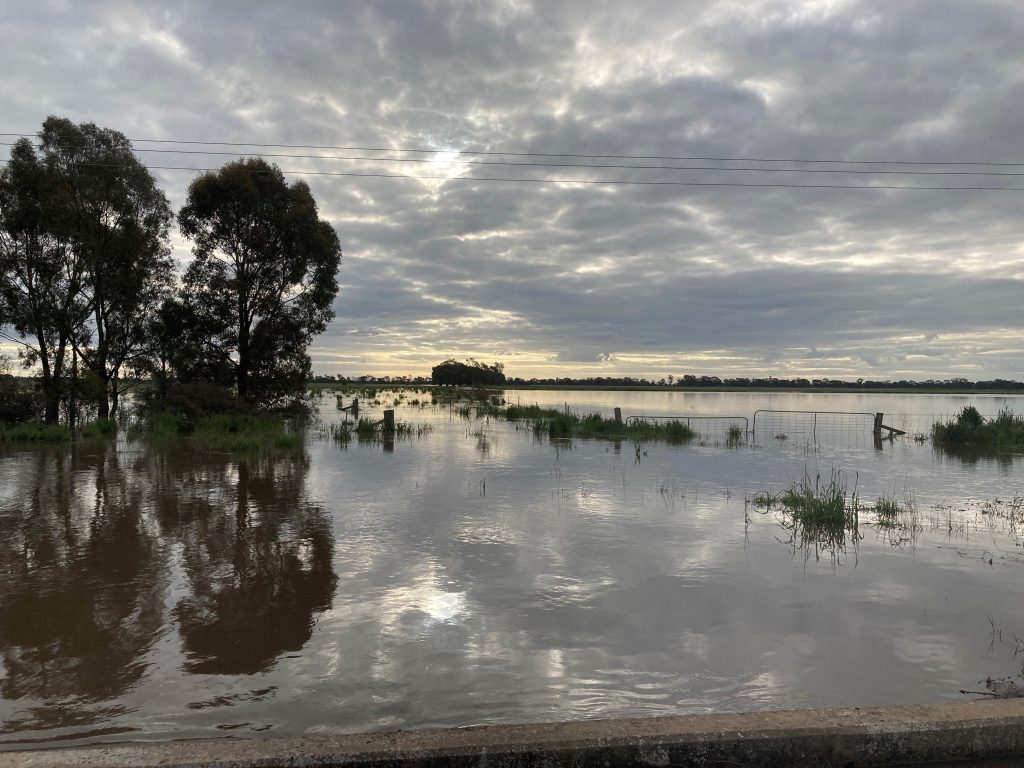
Natalie Egleton, CEO of FRRR, said that the Foundation has already seen local people and organisations once again step up and come together to support one another in the lead up and, as waters start to recede in some places, with the long road to recovery that they have ahead of them.
“The people and places in flood affected regions throughout Victoria, New South Wales and Tasmania will continue to feel the impacts of what’s unfolding for months and years to come. We really can’t stress enough just how big the long term social and economic consequences can be as a result of these kinds of natural disasters.
“Many of these regions, particularly those in Central Victoria, have been through this kind of disaster before, making the current floods all the more traumatic. Many members of the FRRR team themselves have spent the last few days evacuating, helping loved ones to evacuate or have been out sandbagging in their local communities.
“In the last 20 plus years, FRRR has built strong networks and relationships with the people and the community organisations that are being impacted right now and, as always, we’ll be waiting and ready to support them throughout the medium to long term recovery process. Donations to our flood appeal will help to rebuild infrastructure in these areas, address the physical and mental health challenges that occur as a result of this disaster, build the capacity of community groups and strengthen community-led recovery efforts,” Ms Egleton explained.
People can support FRRR’s Flood Recovery Appeal by donating to the Disaster Resilience and Recovery Fund, the Central Victorian Fund or the Strengthening Rural Communities: Prepare & Recover program.
Donations to the Disaster Resilience and Recovery Fund are pooled and invested to ensure that remote, rural and regional communities affected by natural disasters can access flexible, fit-for-purpose funding to support local preparedness and recovery efforts, when it’s needed. For those specifically wanting to support Central Victoria, FRRR also offers the Central Victoria Fund, which continues the legacy of the Central Victoria Community Foundation and focuses solely on that region.
Alternatively, donations can be made to FRRR’s Strengthening Rural Communities: Prepare and Recover program, with FRRR offering one-off, flexible grants through this program to support community organisations in these flood-impacted regions.
FRRR has supported remote, rural and regional communities across the country prepare for and recover from natural disasters since 2006. To date, FRRR has distributed around $46 million for community-led disaster recovery and resilience initiatives.
If you’d like to provide immediate assistance, below is a list of some local organisations that are helping to coordinate support in affected areas:
- Tomorrow Today Foundation – Benalla
- Border Trust – Albury Wodonga Region Community Foundation
- Greater Shepparton Foundation
- Into Our Hands – North East Victoria
- Shepparton FoodShare
- Home – Bendigo Foodshare
- Neighbourhood Houses
- GIVIT
- Rural Aid
- Spontaneous Volunteering – Maribyrnong, Seymour, Rochester, Shepperton and Echuca
Finally, if you would like to volunteer, BlazeAid is currently in the process of recruiting and assembling crews of volunteers.
Three regional communities to take part in multi-year initiative
FRRR’s Disaster Resilient: Future Ready (DR:FR) Victorian program continues to build steam, with three regional communities selected to partner with the Foundation to strengthen the resilience and preparedness of their regions.
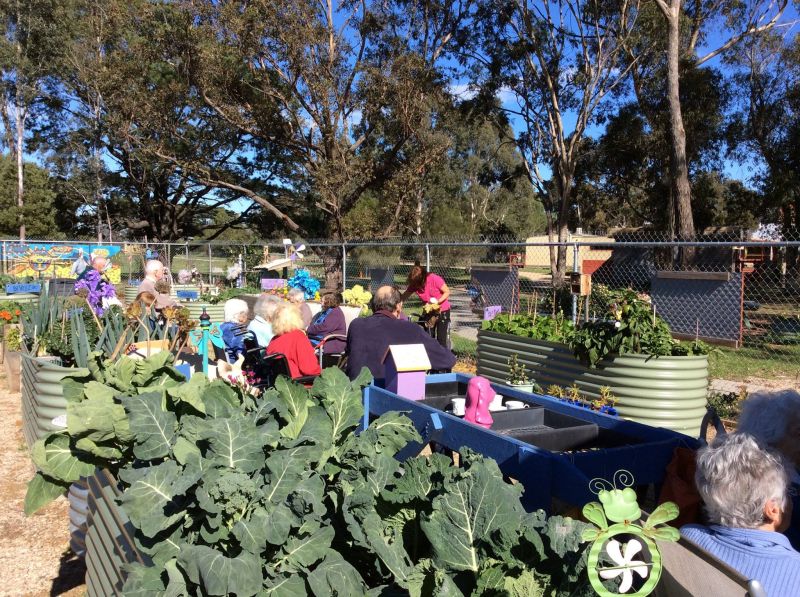
Korumburra, Myrtleford and Whittlesea township and surrounds will receive support as part of a multi-year, community-led program that is supported by a number of philanthropic organisations.
Nina O’Brien, FRRR’s Disaster Resilience and Recovery Lead, said that the DR:FR initiative works to better prepare communities to address the impacts of climate change, natural disasters and broader disruptions that affect the sustainability, vitality and resilience of remote, rural and regional communities across Australia.
“This is a place-based initiative, whereby FRRR works at a hyper-local level with grassroots organisations and community representatives who are interested in collaborating and leading initiatives to increase community preparedness and strengthen resilience capacity.
“The model is designed to help communities identify and then enact solutions that are held in local knowledge and the intersections of people and place. It creates space, facilitates processes, builds relationships and provides resources for community-generated resilience conversations and initiatives to be held at a pace and style that is appropriate for each local community,” Ms O’Brien explained.
Community driven
Late last year community representatives were invited to submit an Expression of Interest (EOI) to become partner communities. Over the past eight months, FRRR’s DR:FR Program coordinator has engaged with representatives from the shortlisted communities, listening and learning about what is unique and important to each place and exploring their readiness, willingness, and capacity to participate in this intensive process.
This process helped FRRR understand their shared aspirations, what they believe is important about their community and demonstrated the commitment and interest in participating in the program.
“The emphasis is on the communities being actively engaged and involved in the process. Our aim is to empower local people to build and adapt the strengths, tools and resources that already exist in each community to further strengthen the resilience and preparedness of each place. It will be community-led and tailored to each community, with support and resources provided to allow them to identify, create and sustain their own resilience-building approaches,” Ms O’Brien said.
The program will start in the next month, beginning with a series of activities to bring interested community members together and start engaging with the broader community around aspirations for the future. In addition to the facilitation support from FRRR, the communities will have access to funding for community activities that support community engagement activities and a seed funding pool to engage a local community connector and activate priority actions identified through the DR:FR journey.
More communities waiting in the wings
“While three communities have been selected, there is strong interest from other places to participate in this program,” Ms O’Brien said.
“We have several communities keen and ready to jump on board and we would love to work with them. Our hope is to expand this program to at least one other Victorian community, and we also have groups in other states wanting to be involved.
“But this requires further funding, so we and our partners can work alongside and support local leaders to create meaningful and lasting change that means they can endure, adapt and evolve from disruptions and disasters more quickly, positively and strongly.
“We are grateful to our current partners for making the Victorian DR:FR program possible. We’d love to hear from others with the capacity to partner with us to expand the program,” Ms O’Brien said.
The DR:FR initiative is kindly supported by the following partners: Sidney Myer Fund, Lord Mayor’s Charitable Foundation, Maple-Brown Family Foundation, Simon Kucher and Partners, Ronald Geoffrey Arnott Foundation, H & L Hecht Trust, Suncorp, Pinnacle Charitable Foundation and the Doc Ross Family Foundation.
For more information about the program, visit https://frrr.org.au/drfr-victoria/.
A call for more investment in local community groups, so they are better equipped to play a key role in building community resilience ahead of climate, natural disasters and other disruptions, is among the series of recommendations to come out of a three-year research project.
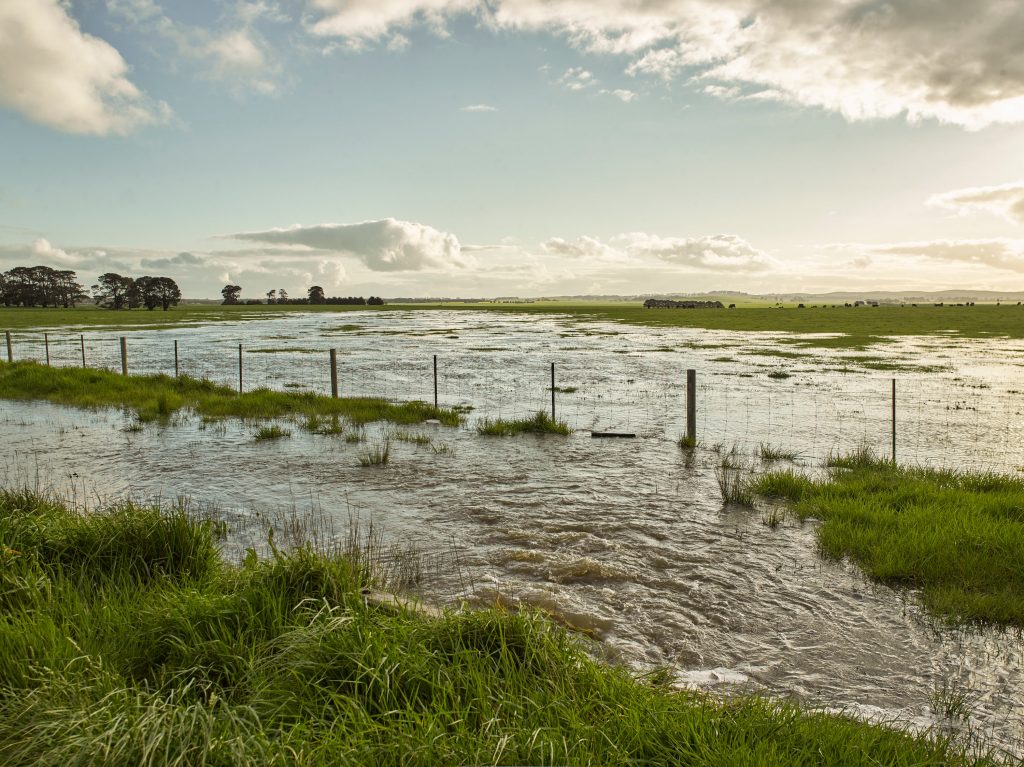
Led by the Foundation for Rural & Regional Renewal (FRRR) in partnership with Resilience NSW and researchers from the University of Sydney, the ‘Get Ready Disaster Resilient: Future Ready (DR:FR) pilots project’ worked with three diverse NSW communities to explore how best to ensure that rural communities are more disaster resilient and future ready.
The ‘Get Ready DR:FR pilots project’ was a structured program that brought groups in each community together to share knowledge and encourage collaboration to identify ways to increase disaster resilience. The program supported co-created initiatives and actions identified by local residents with funding and other support.
The action research component of the project was designed to investigate, understand and measure activities, processes and structures that enable, or hinder, communities in disaster resilience building. Particular attention was focused on measuring how community energy and momentum was sustained or blocked.
Natalie Egleton, FRRR’s CEO, said that the Foundation initiated the project back in 2017, in light of the increasing frequency and severity of natural disasters. An alignment between FRRR’s DR:FR initiative and the Resilience NSW’s Get Ready program enabled the project to be piloted and researched in three NSW communities.
“Every year, we see more and more disasters, which places enormous pressure on Australia’s social, economic, environmental, and policy systems. We need approaches that strengthen social capital and create room for innovation and ground-up solutions that communities can adopt and adapt to better prepare and respond to these events, especially in remote, rural and regional areas,” Ms Egleton said.
“That’s why we developed the DR:FR initiative. It creates space, facilitates processes, builds relationships and provides resources for community-generated resilience conversations and initiatives to be held at a pace and style that is appropriate for each local community,” Ms Egleton explained.
A key finding of the research was that for disaster resilience to be impactful and meaningful, affected communities need to be actively engaged and involved in the process.
“While the core principles for building disaster resilience are consistent, the research confirmed that one-size-fits-all frameworks and models are not effective. Resilience-building must be community-led and tailored to each community, and communities must have the support and resources to allow them to create their own resilience-building approaches.”
“The research clearly demonstrated that when community members worked on projects and activities co-designed by them, adaptive local resilience building was evident. This is an important insight and consideration for agencies and organisations that are designing and implementing resilience building programs with a shared responsibility philosophy of disaster preparedness.”
While the study found that the approaches to disaster resilience and the actions in each community were different, there were seven key factors that are critically important in community-led resilience: communication, networks, self-organising systems, decision-making, information, resources, tools and support and inclusion.
Some other important findings included:
- Social capital plays a critical role in disaster preparedness, not just response and recovery – and needs to be consistently invested in. Community knowledge, skills, time, commitment, capacity and relationships fundamentally underpin disaster resilience.
- Shared responsibility – and actively engaging communities – are critical to successfully building community resilience. Where there was shared dialogue, shared decision-making and increased and shared support for community-led resilience building, communities were significantly more engaged and prepared for disasters.
- Communities need ongoing support to build and maintain momentum for sustained community-led resilience building and they need to be resourced and included as key local players at all phases of the emergency management cycle. Relying on good will and volunteer time alone will not provide adequate capacity to maintain efforts and participation between and during disasters.
- There is a need to invest for the long-term in local capacity and systems, outside of the cycle of relief and emergency response, so that there is sustainability beyond the life of a program or project.
- Resilience is not something that individuals or communities can achieve on their own. It requires combined and intersecting structures, processes, formal and informal networks and supports in communities working together.
The researchers made nine recommendations:
- Community led approaches must move to the centre of resilience building efforts.
- Communities should be regarded as equal contributors in disaster resilience work.
- Shared responsibility must translate into increased and shared support for sustained community-led resilience building.
- Disaster resilience building needs to reflect the experiences of communities and recognise that preparedness, response and recovery are fluid, and sometimes simultaneous.
- The times between disasters is an ideal opportunity to engage communities in complex discussions and hear their ideas.
- Communities should contribute to and contextualise disaster information (outside of warnings and alerts) to local needs, building trust and ownership of information and communication.
- Community-led approaches are valuable, and must be matched with sustained cross-sector and cross-community investment, including recognising the value of community time, skill and effort.
- Resilience building programs and projects must be designed and implemented within a systems framework and acknowledge the complex array of relationships involved, and the time required.
- Further work should be undertaken in supporting practical links between local community organisations and self-organising networks and groups in supporting sustained resilience building in local communities.
You can read the Summary Research Report online at www.frrr.org.au/DRFR.
Meanwhile, FRRR has already leveraged the research insights, findings and recommendations from this research to iterate its methodology, approach, and activities for the next phase of the national expansion of the DR:FR initiative. The Foundation is currently working with a group of Victorian communities who wish to explore and work together in different ways to strengthen their resilience over the next two to three years, with the support of the DR:FR initiative.
FRRR acknowledges the support of the Joint State and Commonwealth Natural Disaster Resilience Program for the action research component of the pilot project. FRRR also appreciates the support of our donor partners in the rollout of the broader DR:FR initiative across Australia, including Sidney Myer Fund, Lord Mayor’s Charitable Foundation, Maple-Brown Family Foundation, Simon Kucher and Partners, Ronald Geoffrey Arnott Foundation and the Doc Ross Foundation for their support of the broader DR:FR initiative across Australia.

